If you’re searching for an exotic yet comforting and one-of-a-kind dish to bring some much-needed variety to your routine, look no further than okonomiyaki, savoury Japanese pancakes. With their street food appeal, healthy nutritional profile, colourful presentation and widely customisable variations, these griddle cakes are sure to please everyone at the table.
The real question, then, is whether you will be able to withstand their mouth-watering cooking process without too much pre-meal nibbling. Whether you’re making them yourself or watching a cook prepare okonomiyaki on a teppan in front of you, you’ll count the seconds until these morsels are ready – we guarantee it.
The Variations
The first thing to know is that okonomiyaki comes in two main varieties: Osaka-style and Hiroshima-style. The difference? In Osaka-style okonomiyaki, all ingredients are mixed together, resulting in a more uniform pancake patty. In Hiroshima-style okonomiyaki, the ingredients are layered, which allows each ingredient to retain its original texture. The Hiroshima recipe also features soba or udon noodles among its layers, for a rich and satisfying result.
The choice is ultimately a matter of taste, but one thing is for sure: preparing Hiroshima-style okonomiyaki requires considerable pancake-flipping skills − and will therefore prove more challenging.
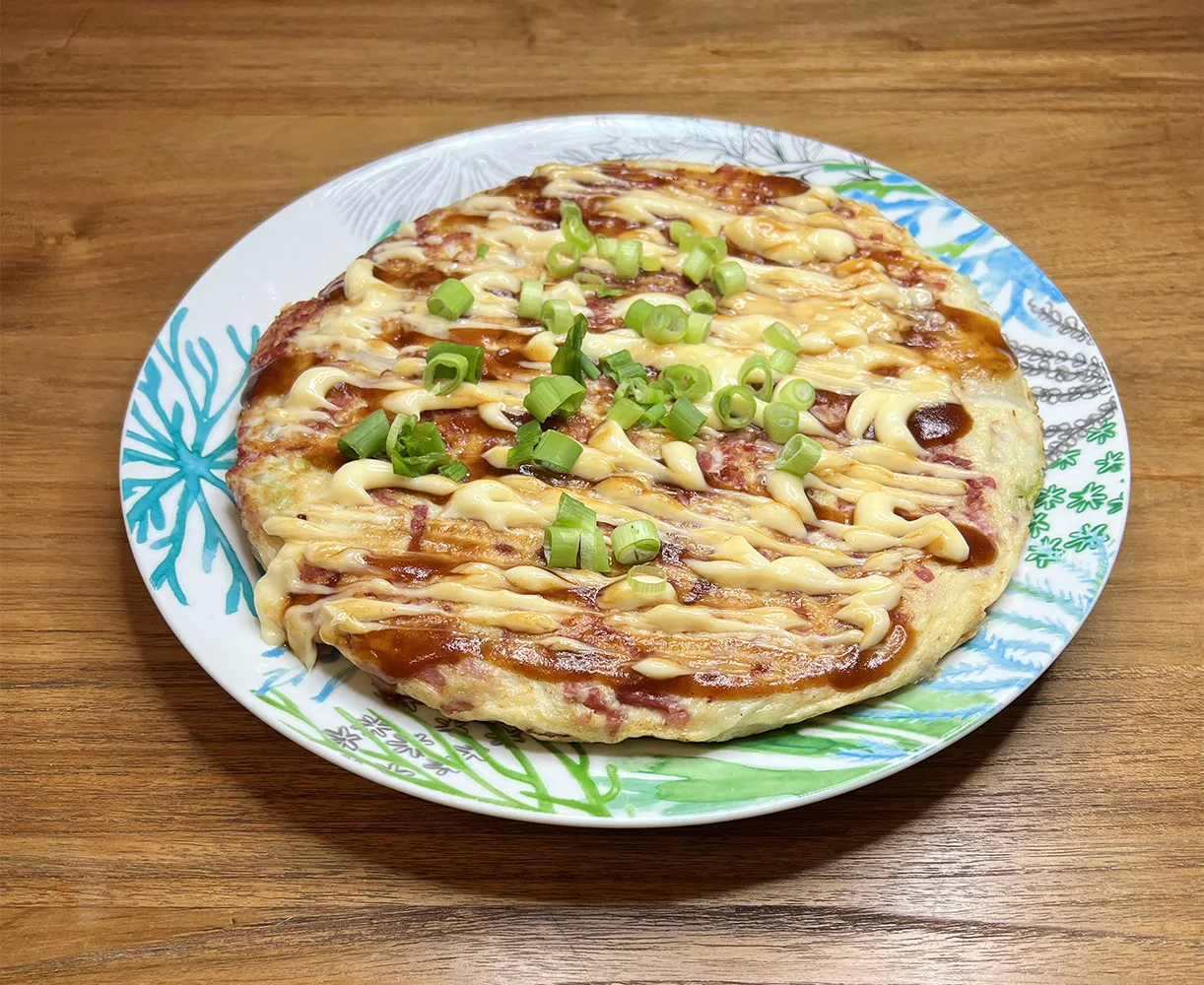
[photo: Osaka-style okonomiyaki]
The Story
The origins of okonomiyaki are rooted in Japan’s Buddhist tradition, dating back to the Edo period in the 16th century. The Hiroshima-style variation on okonomiyaki, however, became popular after World War II: the recipe lent itself well to the variable supply of ingredients available during the city’s reconstruction.
The word, a combination of okonomi (“what you like”) and yaki (“grilled”) is said to have first been used in the Osaka area, also the place of origin of issen yoshoku – flour pancakes with scallions and cabbage that are considered a precursor of the modern-day pancake.
While both Osaka and Hiroshima claim paternity of the dish, each city’s approach to okonomiyaki reflects their distinct culinary traditions and regional preferences. Beyond the two, many other cities and towns in the Hiroshima prefecture have since developed local variations incorporating ingredients such as octopus, chicken, bacon, baked barley and even sake lees, a paste-like byproduct of sake production.
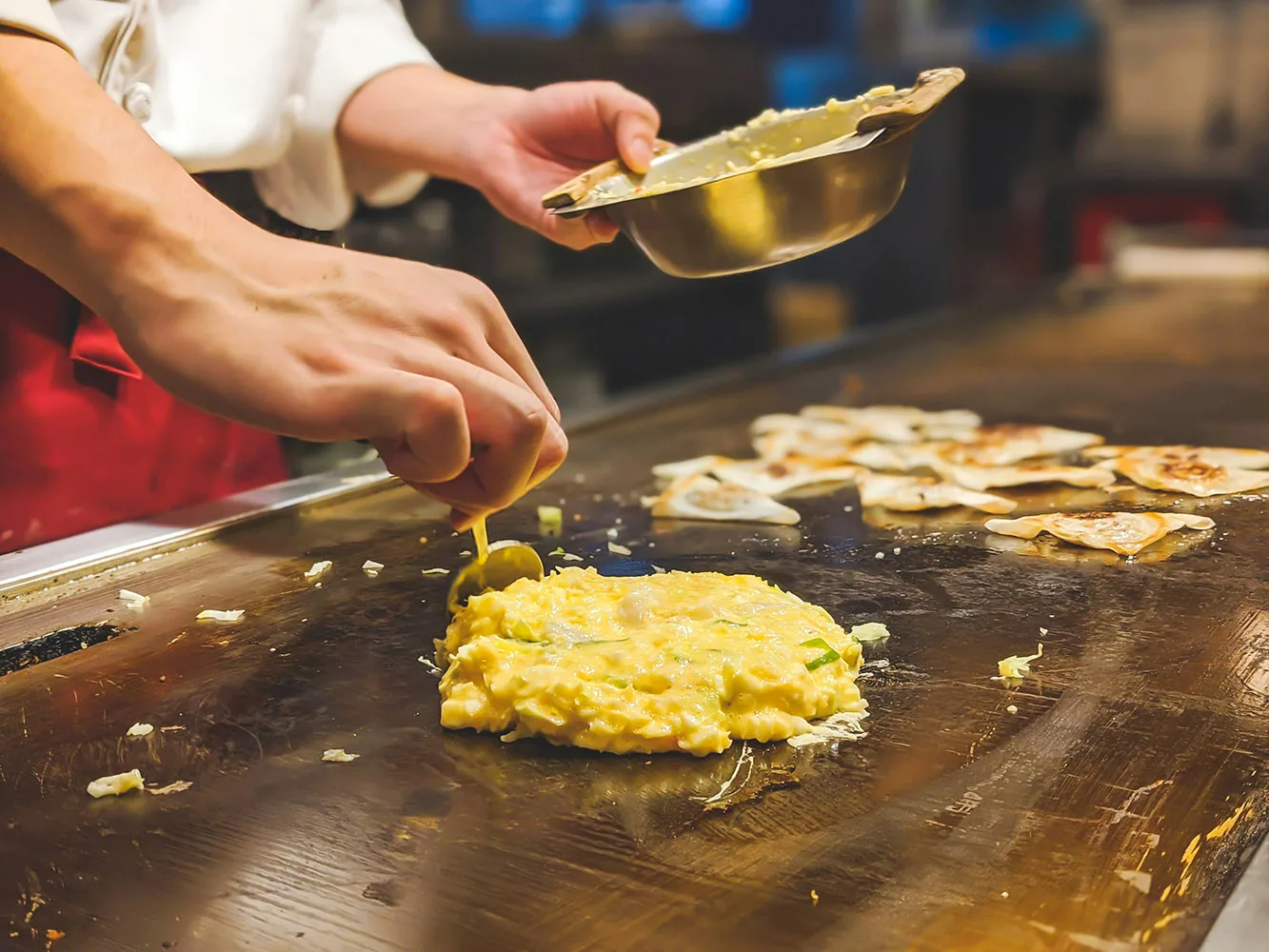
The Cabbage
If there is an ingredient that represents the essence of okonomiyaki, it’s cabbage – ideally Chinese cabbage, aka Napa cabbage. In fact, we’d go as far as to claim that no okonomiyaki can be called such without cabbage. Some whisper that you can substitute it with pak choi, or even with salad, but we don’t recommend it; Napa cabbage is much tastier and makes up for much of the pancake’s delicious umami flavour. It is best shredded in either small square cuts or chunkier strings – so it will be easier to coat with the batter or arrange in the pan, depending on which style you chose.
The best part? Cut correctly, cabbage will not release much water, just enough to make the inside of the okonomiyaki moist without diluting the batter.
The Tenkasu
Literally, tenkasu means “tempura scraps”. Need we say more? Tiny drops of tempura batter are deep-fried to yield an irresistible savoury crunchiness. In Japan, this indulgent cousin of crispy rice comes in a bag for maximum convenience, but you can also make your own. Whichever you use, it will give your okonomiyaki a lovely crunchy bite and flavorful kick. If you resist eating it all while cooking, that is.
The Nagaimo
Choosing which style of okonomiyaki to make entails significant tradeoffs. Take the Osaka-style okonomiyaki: even though it is easier to prepare, it requires the use of Japanese long yam (nagaimo), which can sometimes be found in Asian supermarkets outside of Japan, but it can be challenging. Slimy and sticky, grated nagaimo helps in holding the okonomiyaki batter together and making it fluffy – and it provides the option to skip the eggs and make it vegan. If you can’t find nagaimo (and don’t need a vegan recipe), you can substitute with egg whites and baking powder as mentioned here. Alternatively, opt for Hiroshima-style okonomiyaki instead, and resign yourself to stepping up your pancake-flipping game.
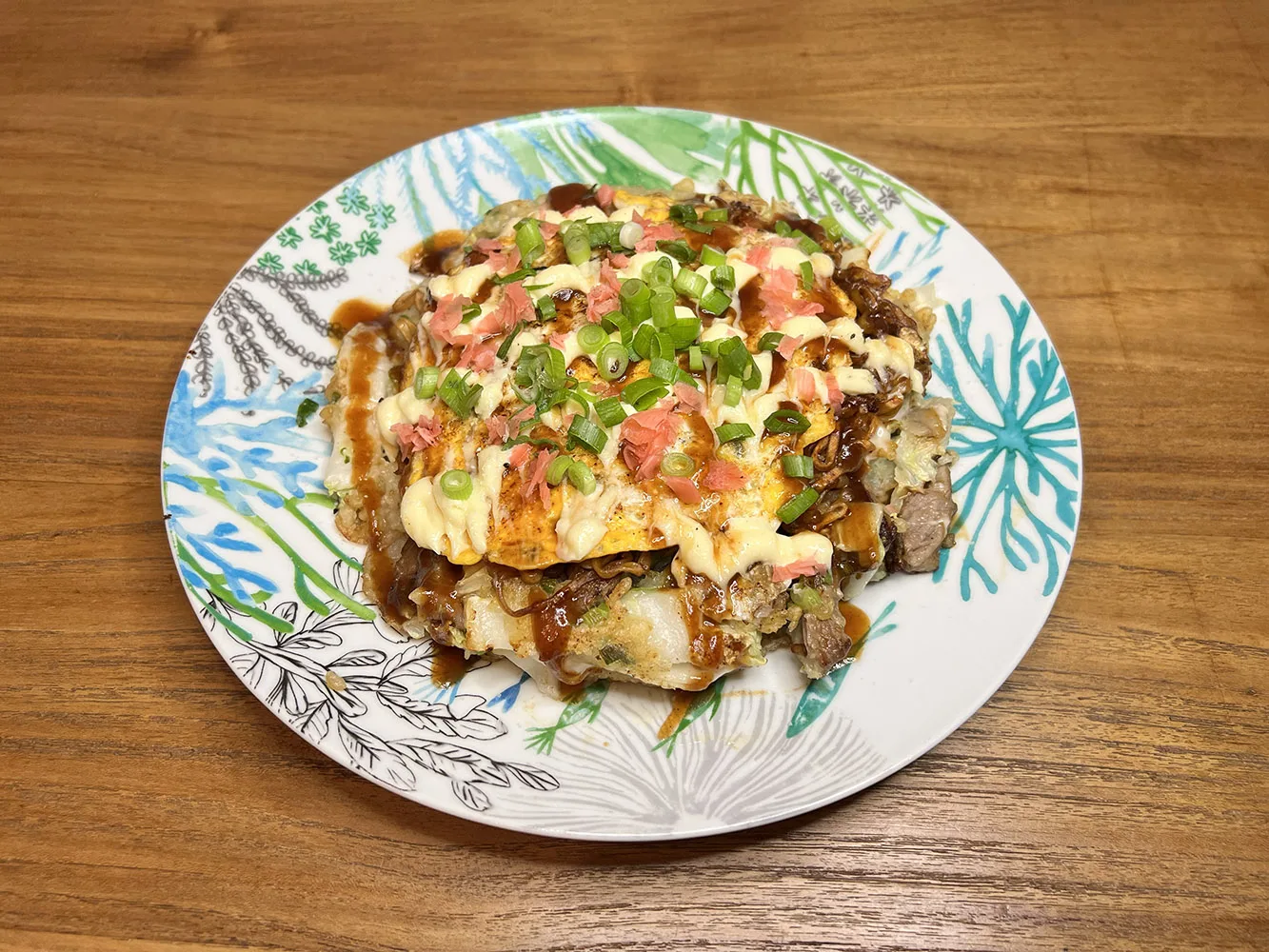
[photo: Hiroshima-style okonomiyaki]
The Condiments
No okonomiyaki is complete without its toppings. Japanese mayonnaise is key – it’s similar to regular mayonnaise, but made by replacing regular vinegar with rice vinegar, and whole eggs with yolks only. Add MSG and sugar, and mix everything in a careful production process. The result is a super-creamy yet tangy condiment that goes perfectly with eggs, meat and fish… and okonomiyaki. Also crucial is okonomiyaki sauce, a simple combination of soy sauce, Worcestershire sauce, ketchup and sugar. Other toppings, like scallions, aonori (dried seaweed) powder and bonito (dried tuna) flakes, can be skipped by first-timers, but the two sauces combined crown the whole dish.
The Batter
There are as many versions of okonomiyaki batter as there are cooks, and nothing is really set in stone. Need it vegan? Go for Hiroshima-style okonomiyaki or use nagaimo in the Osaka-style recipe. Prefer it gluten-free? Use rice flour. Vegan without nagaimo? Japanese home cook Namiko Hirasawa Chen of JustOneCookbook.com recommends increasing the baking powder or experimenting with grated taro.
Whatever the recipe, it is important for the batter to rest, so that the flour has time to properly absorb all liquid, and the baking powder can work its magic. Nami recommends letting the batter “rest for at least one hour (and up to overnight) for a fluffier okonomiyaki,” and we can confirm that it makes a massive difference in the final result. She also suggests not skimping on the dashi, the Japanese broth made from dried kelp and bonito flakes that adds a wonderful umami flavour to the batter.
Finally, some recipes recommend adding minced beni shoga, the red pickled ginger we are all familiar with from sushi restaurants, to the batter; we advise budding okonomiyaki cooks to wait for their second or third iteration of the dish before using it, as the strong taste can easily disturb the balance of flavours.
Make It Yourself
Making your own okonomiyaki is not difficult and can be easily done at home with a little patience, a non-stick pan with a proper lid, and the right ingredients. Bonus points if you have a mandoline slicer for the cabbage (but don’t make it too thin) and a grater for the nagaimo.
We recommend Chen’s recipes for Osaka-style okonomiyaki and Hiroshima-style okonomiyaki.
What To Drink With Okonomiyaki
The perfect drink to accompany an okonomiyaki is, of course, Japanese beer; the refreshing, smooth, slightly acidic taste of these brews pairs perfectly with the savoury pancake. Like many other grilled or fried dishes, okonomiyaki is a well-known drinking food. For this reason, it also goes well with sake, as the higher alcohol volume cuts nicely into the richness of the pancake. If you prefer going alcohol-free, we recommend pairing okonomiyaki with green tea for its slightly bitter yet umami flavour.

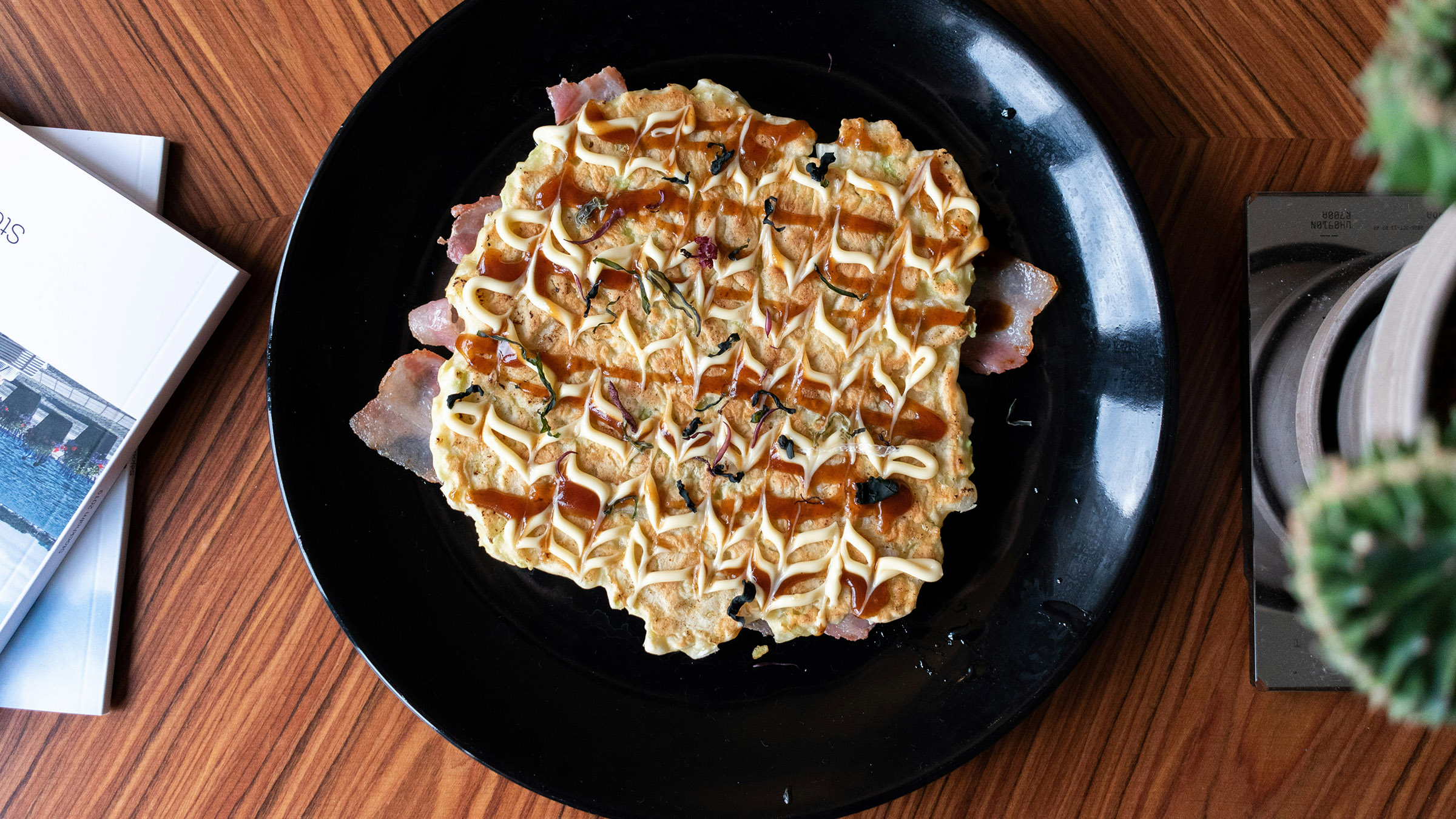
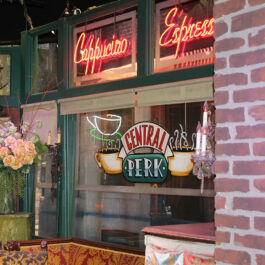











Sorry, the comment form is closed at this time.